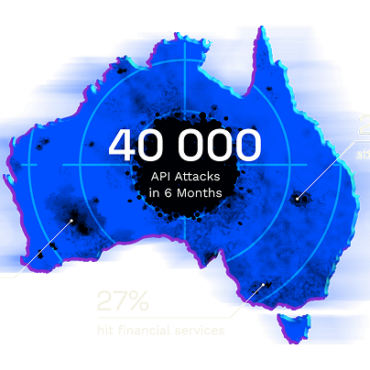Kubernetes and Service Mesh
Updated 30 Jul 2024
In today’s rapidly evolving digital landscape, enterprises face an increasing challenge in managing complex microservices architectures, particularly when using Kubernetes for container orchestration. FinTech and EdTech companies are no exception, as they strive to maintain a competitive edge by ensuring efficient, secure, and scalable operations. This is where the concept of a service mesh comes into play, offering a robust solution to manage service-to-service communication within Kubernetes clusters.
What is Kubernetes?
Kubernetes, often abbreviated as K8s, is an open-source platform designed for automating the deployment, scaling, and operations of containerized applications. Its robust orchestration capabilities enable teams to manage large clusters of containers seamlessly, ensuring high availability and scalability. Kubernetes achieves this through its modular architecture, including features like pod management, service discovery, and load balancing, which streamline the complexities of containerized application management.
Understanding Service Mesh
A service mesh is an infrastructure layer that facilitates secure, fast, and reliable communication between microservices, decoupling this critical functionality from the application code. By providing a standardized way to enforce policies, control traffic, and monitor microservice interactions, a service mesh ensures seamless integration and operation across distributed systems.
Kubernetes and the Role of Istio
Kubernetes has become the de facto standard for container orchestration, enabling enterprises to deploy, scale, and manage containerized applications efficiently. However, as they transition to cloud-native environments, controlling microservice communication becomes crucial. This is where Istio, an open-source service mesh, excels.
How Service Mesh Enhances Kubernetes
While Kubernetes provides the foundational orchestration for containers, a service mesh integrates seamlessly with Kubernetes to address additional needs. Here’s how:
1. Traffic Management:
Service meshes, like Istio, offer sophisticated traffic management capabilities. This includes load balancing, traffic shifting, and fault tolerance. For example, Istio’s features enable precise control over traffic routes, ensuring that requests are efficiently distributed between services. This is particularly useful for canary deployments and blue-green deployments, allowing teams to test new features without impacting the entire system.
– Load Balancing: Istio can intelligently distribute incoming traffic across multiple instances of a service, improving resource utilization and reliability.
– Traffic Shifting: It allows for gradual traffic shifting between versions of a service, which is useful for canary releases and blue-green deployments.
– Retries and Circuit Breaking: Istio can automatically retry failed requests and apply circuit breaker patterns to handle failures gracefully.
2. Security:
Ensuring secure communication between microservices is a critical aspect of modern applications. A service mesh provides robust security features, such as mutual TLS, which encrypts traffic between services. This layer of security is essential for protecting sensitive data and maintaining compliance. With Istio, teams can define and enforce security policies, ensuring that only authorized services can communicate with each other.
– Mutual TLS (mTLS): Istio provides automatic encryption of traffic between services using mutual TLS, ensuring that data in transit is protected against eavesdropping and tampering.
– Access Control: Through Istio’s policy enforcement capabilities, administrators can define fine-grained access control policies, specifying which services can communicate with each other and under what conditions.
– Authentication and Authorization: Istio integrates with identity and access management systems to enforce robust authentication and authorization policies.
3. Observability:
Understanding the health and performance of services is vital for maintaining application reliability. Service meshes offer advanced observability features, such as tracing, metrics, and logging. Istio, for instance, integrates with tools like Prometheus and Grafana to provide comprehensive insights into service performance and communication patterns. This observability helps teams quickly identify and resolve issues, enhancing overall application stability.
– Tracing: Istio supports distributed tracing, which helps track the flow of requests through various services, allowing for detailed performance analysis and debugging.
– Metrics: Istio collects and exposes metrics related to service performance, such as request rates, latencies, and error rates. These metrics can be integrated with monitoring tools like Prometheus and Grafana for real-time visualization.
– Logging: Istio generates logs of service interactions, which are crucial for diagnosing issues and understanding application behavior.
4. Policy Management:
Service meshes allow teams to define and enforce policies across their microservices. These policies can include rate limiting, access control, and retry mechanisms. By centralizing policy management, a service mesh simplifies the process of enforcing consistent rules across services, reducing the need for manual configurations.
– Rate Limiting: Policies can be applied to control the rate at which requests are sent to a service, helping to prevent overload and abuse.
– Retries and Timeouts: Administrators can configure retry policies and timeouts to handle transient failures and improve the resilience of services.
– Access Policies: Policies for controlling which services can access other services are enforced by Istio, ensuring compliance with organizational and security requirements.
5. Integration with Kubernetes:
Istio is one of the most popular service mesh solutions used in conjunction with Kubernetes. It provides a robust set of features designed to address the complexities of managing microservices. Here’s how Istio enhances Kubernetes environments:
– Sidecar Proxy Architecture: Istio utilizes a sidecar proxy model to intercept and manage traffic between services. Each service is paired with a sidecar proxy, which handles communication, traffic management, and security on behalf of the service. This architecture ensures that all traffic is monitored and controlled, providing a consistent and secure communication layer.
– Control Plane and Data Plane: Istio’s architecture is divided into two main components: the control plane and the data plane. The control plane manages configuration and policy decisions, while the data plane handles the actual traffic between services. This separation of concerns ensures efficient management and scaling of service communication.
– Policy and Configuration Management: Istio provides a comprehensive suite of tools for defining and managing policies. These include traffic routing rules, security policies, and observability settings. By integrating these features into Kubernetes, Istio simplifies the process of configuring and managing complex service interactions.
Applications of Service Mesh in Business Functions
1. Customer Service
For companies with extensive customer interactions, ensuring seamless communication between customer-facing applications and backend services is critical. A service mesh allows for reliable, secure, and observable service communication, improving customer experience.
2. Human Resources
In HR, managing employee data securely across various applications and services is essential. A service mesh enforces security policies and streamlines data communication, ensuring compliance and protecting sensitive information.
3. Data Analysis
Data-driven decision-making requires fast and secure data flow between analytical tools and data sources. Service meshes provide an efficient, secure communication layer, enhancing data analysis processes.
4. Supply Chain Management
For supply chain operations, real-time communication between systems is key to maintaining efficiency. Service meshes optimize these communications, reducing latency and enhancing operational fluidity.
5. Marketing
In marketing, personalized customer interactions are paramount. Service meshes enable seamless data exchange between CRM systems and marketing tools, ensuring timely and relevant customer engagement.
Benefits of Using a Service Mesh with Kubernetes
The integration of a service mesh with Kubernetes delivers numerous benefits for managing cloud-native applications:
Enhanced Control: A service mesh provides granular control over service communication, enabling fine-tuned traffic management and security policies. This control is crucial for maintaining application performance and reliability.
Improved Security: By encrypting traffic and enforcing security policies, a service mesh enhances the security posture of applications. This added layer of security helps protect against data breaches and unauthorized access.
Greater Observability: With built-in observability features, a service mesh provides valuable insights into service performance and communication patterns. This visibility enables proactive issue detection and resolution, improving overall application stability.
Simplified Management: Centralized policy management and traffic control reduce the complexity of managing microservices. Teams can define and enforce consistent rules across services, streamlining operations and reducing manual overhead.
Conclusion
Implementing a service mesh within a Kubernetes environment is not just a solution for current operational challenges but a strategic move toward future-proofing your enterprise infrastructure. By enhancing security, observability, and scalability, service meshes enable FinTech and EdTech companies to streamline operations and thrive in an increasingly competitive market.
For organizations seeking to leverage the full potential of Kubernetes and service meshes, partnering with experts like Ostride Labs can provide the guidance and expertise needed to implement these technologies effectively. Start your transformation today and explore how Kubernetes and service mesh can revolutionize your business operations.



